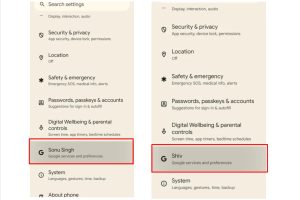23 Feb. (Portaltic/EP) –
The number of SIM cards embedded in the devices (eSIM) assets will go from 1,200 million in 2021 to 3.4 billion in 2025which will mean a growth of 180 percent in just four years.
This is revealed by a G+D study prepared by the consulting firm Juniper Research, according to which currently 94 percent of eSIMs are used in consumer devices and its use continues to spread in the industrial environment.
In fact, the study indicates that currently there are 760 million eSIMs embedded in Internet of Things devices (IoT) and connected sensors, as stated in the press release.
The study shows that in the last five years the most important telephone manufacturers and operators in the industry have promoted the transition in their installed base from classic SIM cards to eSIM, a chip permanently installed in the device in which the data can be downloaded. profiles of mobile phone operators via WiFi or mobile network.
By the end of 2020 there were already 110 models of ‘smartphones’, smart watches and bracelets, laptops and tablets equipped with eSIM and, with the arrival on the market of mid-range smartphones with these integrated cards and the growth of 5G, it is expected that in 2023 eSIM technology will be incorporated in practically all of its new models.
One of the advantages offered by the eSIM card to users is that when they sign up or change network provider, they do not have to handle small plastic cards or their device to remove and insert them. And they don’t need to worry about different SIM card formats either.
Users can activate their mobile contracts completely digitally using their own device, by scanning, for example, a QR code located on the operator’s customer portal. As highlighted by G+D, the need to go to a service point disappears and wait for the SIM card to be sent by mail.
On the other hand, eSIM technology is more flexible. With classic SIM cards it is only possible to use a single mobile communications contract. On the contrary, through eSIM users can install and switch between multiple contracts with the corresponding contractual conditions of the operators. It is also possible to use several phone numbers, for example, one private and one work.
eSIM technology is also more adapted to travel. Travelers can activate an additional mobile phone provider for local voice and data needs or they can sign a contract with a provider that offers low rates worldwide instead of paying roaming fees.
And since the chip that receives the eSIM data is built directly into the device, There is no longer a need to manufacture plastic frames for SIM cards, which often end up in the trash every time you buy a new one. Additionally, eSIMs do not need to be sent by post, which also means that the CO2 associated with that transport is eliminated.














